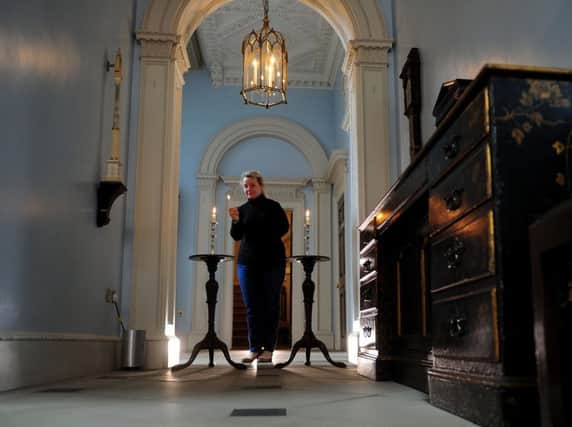Shedding a new light on a time when a gentleman’s wealth was measured in wax


Pressed into silver candelabra and placed upon elaborate rosewood torchères that might otherwise be mistaken for pot plant stands, they evoke a lost, Georgian world in which social standing was measured in wax and wick as much as by worth.
It is an environment one of York’s grandest period houses plans to recreate, with the launch of a £30,000 campaign to turn back the clock to a time before electricity or even gas lamps.
Advertisement
Hide AdAdvertisement
Hide AdIt was a chance discovery at an auction last year that ignited the ambition at Fairfax House, an elegant merchant’s residence within sight of Clifford’s Tower.
One of a pair of George II candle stands from around 1750, immaculately hand carved from Indian hardwood, had stood in the house since its donation by the collector Noel Terry, part of York’s chocolate orange dynasty. Its twin, from which it had been separated for the best part of a century, was thought to be permanently lost, until it emerged at a saleroom in Wiltshire.
“The opportunity to bring objects back together happens all too rarely. This was something which we knew we had to achieve at all costs,” said Hannah Phillip, director of Fairfax House.
Its acquisition for £6,500, with the help of the Arts Council and the Victoria & Albert Museum, marked the beginning of a journey to recreate the interiors of the house as they would have looked under candlelight alone.
Advertisement
Hide AdAdvertisement
Hide Ad“We’re so familiar now with flicking on a switch that it’s quite impossible to imagine what it would have been like and why you needed pieces such as candle stands,” Ms Phillip said.
York Civic Trust, which bought the property in the 1980s, is appealing for funds to reinstate the original candle fittings or replicas throughout the building, in order to illuminate for a modern audience the class-ridden way in which domestic lighting was approached in the 18th century.
“The torchères are basically candle stands, just a bit taller, and there would have been a candelabra on each to light the dining room, as well as all the candlesticks on the table,” Ms Phillip said.
“Then you’d have a number of them in the saloon and some in the drawing room, and you might even have something in your bedroom next to your dressing table if you were wealthy enough.”
Advertisement
Hide AdAdvertisement
Hide AdBut the cost of premium beeswax candles was so steep that not even the well-heeled could afford to place them in areas their guests couldn’t see.
“Tucked away in your bedroom you’d probably use tallow candles, which were cheap but nasty and smelly and gave a very poor light, but you wouldn’t put your money where it couldn’t be seen,” Ms Phillip said.
Candles made of natural wax were such a luxury that senior servants considered it a perk to be given the stub of one, which could then be sold on. Used tea leaves were similarly prized.
Tallow candles were far less desirable, with larger houses bypassing the services of the local chandler and making their own from leftover beef and lamb far in the kitchen. Candles made of paraffin wax were not available until the mid-19th century.